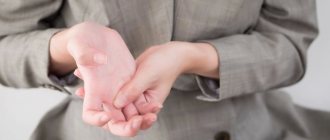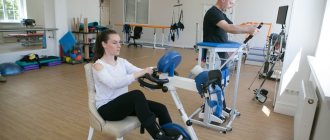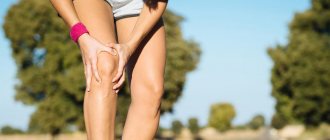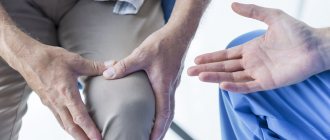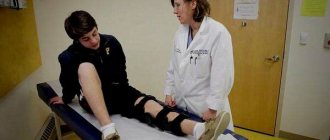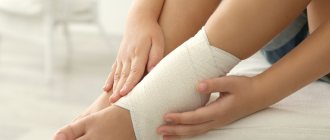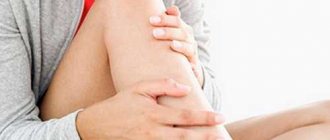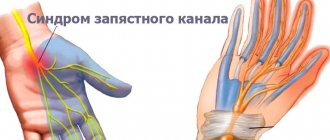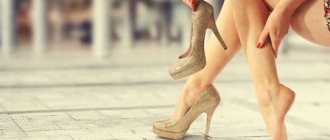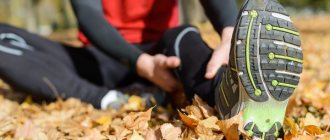There are several topics that are being discussed with increased activity on various running forums: the best running shoes, the most accurate GPS watches, and does kinesio tape really work? Professionals and amateurs can defend their point of view until they are hoarse and challenge the arguments of others. But when discussing the reasons for leaving the race, everyone unanimously agrees that it is pain in the lower leg area.
Research shows that 60% of the causes of lower leg pain, as well as up to 15% of the causes of sports injuries, lie in the diagnosis of MTSS.
MTSS
(medial tibial stress syndrome) - stress syndrome of the medial surface of the tibia, in our country it is more often called inflammation of the periosteum, is one of the common causes of pain in the lower extremities. More often, pain is diagnosed in the lower two thirds of the leg. Occurs in people during aerobic exercise - 22%, while running - 17%, in tall adolescents - 13%. This syndrome is also typical for athletes, skiers, speed skaters, figure skaters, gymnasts, and football players.
Pain occurs during sports competitions (especially with inappropriately heavy loads), when exercising indoors on a hard surface, when making sharp turns or changing the vector of movement (pronation), when walking on an uneven surface, uphill/downhill. The pain intensifies with increasing load and decreases with rest, until it disappears completely, although in some cases the pain may persist for a long time.
Externally, the pain may be accompanied by swelling of the legs and local redness. If continued physical activity and improperly worn footwear, the condition can lead to a typical stress fracture - the accumulation of tiny cracks in the bones of the legs that appear from excessive repetitive stress - writes Jordan Murt, an Australian sports physician, author of Running Strong and published in his book in Russia, the book “Directory of General Practitioners”.
Dr. Jordan D. Metzl is a nationally recognized sports medicine physician practicing at the Hospital for Special Surgery in New York City, the premier hospital for orthopedics in the United States. More than 20,000 athletes and patients of all ages passed through his hands and rose to their feet. Dr. Jordan Murt teaches and lectures to students. In addition, he is a runner and triathlete, author of best-selling books about medicine and sports, and a fitness instructor. Having fought through a devastating injury himself and gotten back on his feet, he has dedicated his life to teaching other runners technique and strength training to prevent sports injuries.
Inflammation of the periosteum is a broad concept that includes pain of various types and origins.
“Some people feel pain only in the muscles, others in the lower leg, some report pain in the knee,” explains Mike Young, athletic trainer and founder of the Athletic Lab, Ph.D., educator, author of numerous publications, and researcher in the fields of kinesiology and biomechanics. and sports psychology.
Is running bad for your joints?
There is always harm to joints during active physical activity. While running, the load increases. When a person places emphasis on one leg, he transfers his body weight to it. The knee joint receives a shock portion of this load - it is most actively exposed to danger.
On the one hand, a similar process occurs during walking. The body weight shifts first on one leg, then on the other, but it is running that destroys the joints faster. This occurs because the body's mass is multiplied by the acceleration force. And the faster we run, the more noticeable the negative impact will be, as the load increases.
It is also necessary to take into account that running can be different - jogging, sports, long strides, with complex elements, classic. When creating support on one leg, a person puts stress on different joints and the musculoskeletal system. The longer the step, the greater the support, the more time it takes to perform the action. This creates conditions for increased load.
The safest running is slow, in small steps. In this case, the joints are subject to less intense destruction, and the risk of inflammatory processes is reduced.
Running harms not only your knees, but also your hip joints. Other joints are subject to less stress, although in any case it will be increased, since the pressure remains always high during running.
The greater a person's weight, the more intense the load on the musculoskeletal system. A person weighing 60 kg, taking into account the acceleration force, will “wear out” their joints more slowly than a person weighing 120 kg . Therefore, for people who weigh more than average, there are alternative options for active pastime. This can be fast walking or slow running with enhanced fixation of the knees and ankles.
Running and knee joints
As already noted, the knee joints are subject to the most active load while running. However, its intensity may vary. Let's look at the factors that influence the degree of damage to the knees while running:
Movement speed. The mass of the body is multiplied by the acceleration force. Accordingly, the faster you run, the more active the load. Low and medium speeds are less harmful to the knee joints. As a rule, running is considered to be a moving speed of 8 km/h, but the execution technique also plays a significant role, since you can walk quickly at a similar speed.
Incorrectly selected shoes . For running, you need to choose special running shoes that provide shock absorption and high-quality grip of the foot with the ground or floor surface. The purpose of shoes is to fix the foot in a certain position.
Features of the structure of joints. Some people have stronger joints than others. Some people run all their lives and experience virtually no problems with their knees, while others constantly suffer from pain. Scientists and doctors cannot say for sure what exactly are the fundamental factors affecting the structure and resistance of joint tissue to stress. According to different versions, this is the quality of water, air, nutrition, lifestyle features, and movement.
Execution technique. A lot depends on how you position your foot. You cannot “hit” your feet on the floor while running; you need to move your foot smoothly, roll your foot from heel to toe. Many people don’t even think that they increase the load on their joints only because they jump on the entire foot at once, rather than starting from the heel smoothly and gradually.
What to do to reduce damage to your knee joints while running:
Choose the right shoes. Running shoes are sold in sports stores. They are produced by brands that manufacture sporting goods. Reliable fixation of the ankle is important, as is how well the degree of rigidity of the sole, insole, and platform elevation are thought out. Use fixing bandages, orthoses, orthopedic corsets , and other related products that will help secure the joints in the correct position. This will potentially reduce the load, reduce the likelihood of inflammation after running, and make it easier to move. Watch how you place your feet. The load should not fall only on the heel. Smoothly stand on the surface, immediately move your leg, smoothly lift it. Don't strain your knees. Follow the technique - this will help protect against inflammatory processes. Eat right , drink purified water with a high content of beneficial components. Avoid water from coolers - as a rule, it comes in the same plastic bottles, which gradually begin to release toxins into the liquid. According to many doctors, this is one of the reasons for the premature destruction of joint and bone tissue.
Anatomical features of the foot
If we compare the foot with a thigh or lower leg, it will seem small and simple to us. Understanding such a small mechanism should be incredibly simple. In fact, it's the other way around.
The foot bears the load of the entire body every day: walking, running, jumping, and normal standing.
The complex structure of the foot helps to cope with them. It is rightly called “an engineering miracle of nature”: 26 bones, 31 joints, more than a hundred muscles, tendons, and ligaments.
Therefore, if after running your foot hurts on the outside, along the medial edge or in the sole area, there can be a huge number of reasons.
We will try to highlight the most common ones.
The effects of running on joints
Tissue destruction. One common problem is arthrosis, in which the cartilage becomes thinner. Inflammatory processes. We are not always talking about arthritis, since it has a deeper origin, but inflammation can also occur after running due to the increased impact on the tissue.
How to solve the problem of knee pain if you already have it due to running:
- use ointments that have an anti-inflammatory effect;
- drink more clean water;
- minimize the load on your legs for several days;
- breathe more fresh air;
- wear safety shoes;
- wear knee and ankle braces;
- strengthen your muscles;
- Taping also helps to recover from injuries.
Ankle pain: causes
Before prescribing therapy, we carry out diagnostics and identify the origin of the illness, injury or disease.
Painful sensations can provoke chronic pathologies:
- feet (transverse, longitudinal flat feet);
- inflammation;
- varicose veins;
- arthrosis;
- osteochondrosis;
- heel spur.
The ankle joints hurt, the reasons for this condition are:
- dislocations;
- ligament damage;
- fractures or sprains.
Ankles hurt in people who are overweight and in the fair sex if they often wear high heels.
Pain in ankle when running
If discomfort is felt only during such an exercise, then gout and rheumatism can be immediately ruled out.
When these diseases appear, the ankle hurts all the time; it does not appear with the beginning of the load and does not disappear later. Therefore, the main etiology of pain syndromes is traumatic injury. This is a sprain, bruise, crack or dislocation. When bruised, the ankle ligaments hurt and the limb swells.
Arthrosis
As a result of arthrosis, cartilage tissue is damaged and the cartilage becomes much thinner. Timely treatment prevents the functional destruction of cartilage. The disease occurs in 4 stages:
- at the first stage, stiffness is observed in the morning, which disappears after a quarter of an hour; a muffled crunching sound is heard when the feet are rotated in a circular motion;
- on the second one feels tired when covering distances of less than 1 km. Morning paralysis becomes longer;
- the third is characterized by pain in the front leg in the evening and in the morning. Joint inflammation is accompanied by its enlargement and deformation;
- on the fourth, there is a threat of dysfunction, despite the fact that the tumor completely disappears. The cartilage is destroyed at this stage, so it is important to contact a specialist as early as possible to save the mobility and health of the joint.
Only highly qualified doctors who are familiar with the symptoms of the disease can eliminate discomfort, find the correct treatment, and conduct an accurate examination. All therapeutic procedures are aimed at:
- pain relief;
- reduction of swelling;
- restoration of mobility.
We use chondroprotectors, non-steroidal drugs with anti-inflammatory effects, and glucocorticosteroid hormones.
Chondroprotectors are used to stop the destruction of cartilage tissue, they strengthen and regenerate them. After taking a full course of chondroprotectors, the tendon structure is completely restored.
Anti-inflammatory medications relieve swelling and destroy the source of infection. The doctor prescribes taking anti-inflammatory pills until the foot returns to its natural shape.
Analgesic drugs are taken only in the first days. They can reduce pain, relieve the patient from suffering and restore mobility.
Antibiotics are used when identifying an infection in the joint capsule. On average, the course of therapy lasts from 4 to 8 days.
Arthritis
Pain without injury is the result of arthritis. There are several types of inflammation:
- rheumatoid;
- psoriatic;
- septic.
Rheumatoid. It represents failures observed in the immune system, which lead to pathological reactions in the tendons. It appears gradually and progresses over time, causing swelling.
Psoriatic. The cause of swelling is skin rashes. In this case, psoriatic plaques are visible on the affected area and spread throughout the body.
Septic. It begins to develop when microorganisms enter the bloodstream during a generalized bacterial infection. If effective treatment for the disease is not started in time, the patient is likely to become disabled.
Obstruction
Do your ankle joints suddenly hurt? If the plexuses hurt on both legs, this is the initial syndrome of impaired blood circulation in the peripheral vessels. This condition is always accompanied by severe swelling of the veins.
Orthopedic doctor Andrey Sergeevich Litvinenko comments:
Diagnosis consists of clinical studies of the patient's blood test, computed tomography and Doppler ultrasound. To eliminate pain, the doctor applies a compression bandage, selects special physical exercises, and tonic ointments.
Pain in the left ankle: causes
They arise due to curvature of the spinal discs. When it is deformed to the right or when the sciatic nerve is inflamed, a tingling sensation is felt in the left limb.
Calcaneal dislocation
Does your heel hurt when walking? This is the first sign of a heel spur, characterized by the proliferation of bone tissue.
The bone can be damaged after falling from a height of 1 meter. Dislocations are always characterized by sudden pain. With fractures, it is difficult to step on the foot, the surface of the foot thickens, and a hematoma appears. To identify it, radiography and tomography are performed.
A professional traumatologist then administers local anesthesia and manually reduces the deformity into place, after which a tight plaster cast is applied.
Infection
Feeling discomfort? It may appear if the ankle and soft tissue become infected. The main features of the lesion are swelling and redness. Painful foot syndromes depend on the etiology of the pathology, ranging from minor to burning and quite sharp.
To diagnose, the doctor examines blood and synovial fluid, does an x-ray or ultrasound.
| Injection in the ankle joint for pain |
Sign up for treatment
Achillitis
Severe and sharp pain in the ankle without injury occurs due to inflammation of the Achilles tendon. Signs of achillesitis are:
- swelling or redness of the tendon;
- roughening of the skin;
- thickening of the tendon.
Painful syndromes appear at the beginning of walking and then subside. Diagnosis of Achillitis is carried out by radiographic or ultrasound examinations, using MRI. The disease is eliminated by a surgeon or orthopedist. For people with this diagnosis, they select physiotherapy, gymnastics, as well as effective analgesic ointments.
Women often twist their ankles when walking in high-heeled shoes. These symptoms indicate flat feet, sprains, strains, or heel spurs. Properly selected shoes with a thick heel less than 2.5 cm can help get rid of debilitating pain. The heel must be stable. Wedge shoes are the best alternative to uncomfortable heels.
Metabolic disorders in the body, daily wearing of low-quality shoes, flat feet, unbalanced nutrition are the main reasons for the development of osteophyte. The disease manifests itself in the occurrence of bone growths or ossification of areas of the ligamentous apparatus. As a result of the appearance of osteophytes, the capsule between the surface of the bone (talus) and the growth is pinched, creating serious discomfort while walking.
Deforming arthrosis is considered a chronic pathology. It causes degenerative changes in cartilage, which subsequently lead to its destruction. As the pathology develops, the joint hurts only when under load. At the second stage, the following clinical manifestations occur:
- sharp pain at the top of the foot in the morning when trying to stand on one's foot;
- every movement is accompanied by crunching and creaking;
- a feeling of difficulty in movement prevails;
- the legs swell and the temperature rises.
People with this diagnosis are at risk of permanent dislocations.
Running and the hip joint
The hip joints are also subject to increased stress when running. However, the main impact falls on the knee areas. The rules that apply to running also apply to the hips. It is difficult to fix the pelvis with a bandage. It is recommended to keep your back straight and not lean to one side, back or forward.
Weak muscle tissue, not prepared for increased load, cannot withstand it and transfers it to the joint, thereby provoking inflammation and active destruction. To prevent this, it is recommended to monitor your posture, strengthen your back muscles and gluteal group - this will help minimize damage to the hip area while running.
What to do for pain in ankle ligaments?
In case of injury, the following measures must be taken:
- place the limb on a horizontal surface so that it is at rest;
- apply a tight elastic bandage;
- apply something cold to relieve swelling;
- drink an anesthetic.
If pain occurs, do not endure it, contact us immediately. Only a professional specialist is able to correctly diagnose and select an effective set of exercises.
Why do my joints hurt after running or while running?
A joint is a fluid-filled space between bones, assembled into a capsule and ligaments. The lining contains synovial fluid. It is she who is responsible for depreciation.
When a person runs, synovial fluid is used up faster. Its lack provokes active friction, which causes inflammation and destruction. The more powerful the load, the higher the risk of joint diseases. The synovial membrane becomes injured and inflamed, causing the joints to begin to ache, their functionality decreases, and wear accelerates.
Take care of yourself and run correctly!
